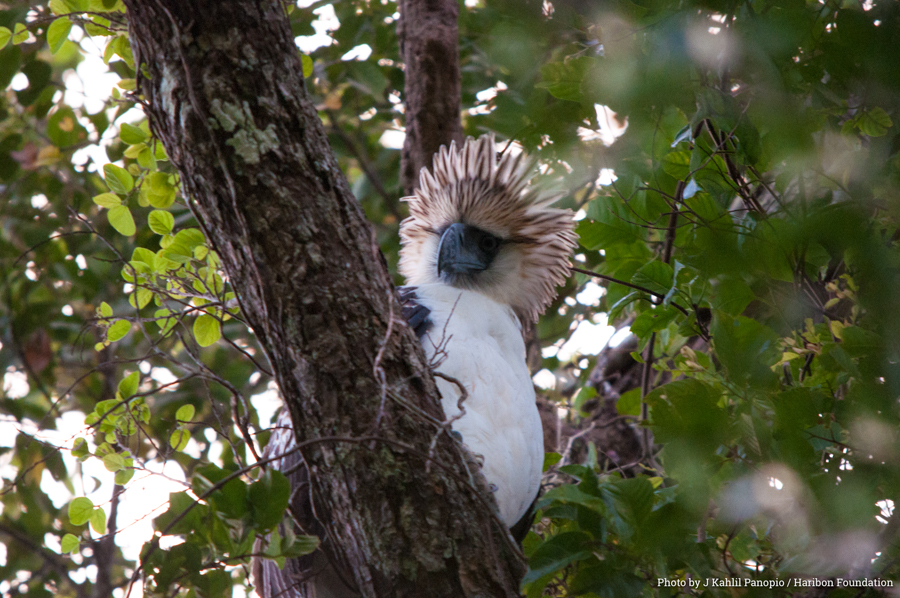The construction of the multi-billion peso Kaliwa Dam Project will not only have devastating effects on people’s lives, it will also ravage the homes of thousands of threatened wildlife species in the Sierra Madre mountain forests including the Critically Endangered Philippine Eagle.
Sierra Madre is considered one of the most biodiverse areas and the largest remaining tract of rainforest in the country.
According to the Integrated Biodiversity Assessment Tool (IBAT) curated by BirdLife International, International Union for Conservation of Nature (IUCN) and United Nations Environment Programme World Conservation Monitoring Centre (UNEP-WCMC), the forests and coastline of Presidential Proclamation No. 1636 (series of 1977) is a key habitat to 15 species of amphibians, 334 bird species, 1476 fish species, 963 invertebrate species, 81 mammal species, 50 plant species, and 60 reptile species.
Significant number of species in PP 1636 are considered as Globally Threatened by IUCN, albeit their habitat’s protected status. The protected area is home to the Critically Endangered Philippine Eagle in its forested mountains and the Critically Endangered Hawksbill Turtle in its coastlines, among other globally threatened species (see table 2).
Table 1. Species richness per taxonomic group whose “limits of distribution” intersect with the bounds of PP 1636 (Birdlife International, IUCN and UNEP World Conservation Monitoring Center, 2018)
| Taxonomic Group | Count of Species |
| Amphibians | 15 |
| Birds | 334 |
| Fishes | 1476 |
| Invertebrates | 963 |
| Mammals | 81 |
| Plants | 50 |
| Reptiles | 60 |
| Total | 2979 |
Table 2. Threatened species richness per taxonomic group whose “limits of distribution” intersect with the bounds of PP 1636 (Birdlife International, IUCN and UNEP World Conservation Monitoring Center, 2018).
| Taxonomic Group | CR | EN | VU | DD | Total |
| Amphibians | 1 | 1 | |||
| Birds | 2 | 5 | 16 | 2 | 25 |
| Fishes | 8 | 46 | 97 | 151 | |
| Invertebrates | 12 | 165 | 117 | 294 | |
| Mammals | 3 | 5 | 15 | 23 | |
| Plants | 1 | 2 | 3 | ||
| Reptiles | 1 | 2 | 7 | 8 | 18 |
| Grand Total | 3 | 31 | 240 | 241 | 515 |
CR – Critically Endangered; EN – Endangered; VU – Vulnerable; and DD – Data Deficient
The Kaliwa Watershed Forest Reserve, in which the Kaliwa Dam is said to be constructed, was declared as a forest reserve by Proclamation No. 573 on June 22, 1968. Under Proclamation No. 1636 issued on April 18, 1977, a portion of the watershed was declared as National Park and Wildlife Sanctuary. The Kaliwa Dam project is one of the flagship infrastructure projects identified by the government that will be financed by China through a bilateral loan agreement.
Haribon believes that the survival of the vast variety of wildlife found in this area depend on the extensive lowland and montane forests of Sierra Madre.
The Kaliwa Watershed is home to various threatened wildlife such as the Endangered Northern Philippine Hawk-eagle (Nisaetus philippensis), the Philippine Brown Deer (Rusa marianna), the Philippine Warty Pig (Sus philippensis), the Vulnerable Northern Rufous Hornbill (Buceros hydrocorax), the Critically Endangered Philippine Eagle (Pithecophaga jefferyi), and restricted-range birds of the Luzon Endemic Bird Area, all of which are found nowhere else in the planet.
The dam construction will endanger various plant life found in the Sierra Madre mountain range. The biggest portion of the Kaliwa Watershed vegetation has approximately 12,147 hectares of residual forests which has around 172 plant or flora species recorded: 39 of which are endemic or only found in the country, and 17 are threatened or vulnerable to endangerment or extinction in the near future.
Notable species spotted in the area are the endangered and rare Rafflesia manillana and Jade vine (Strongylodon macrobotrys), and other critically endangered tree species like Red Lauan (Shorea negrosensis), White Lauan (Shorea contorta), Mayapis (Shorea palosapis), Bagtikan (Parashorea malaanonan), Tiaong (Shorea ovata) and Dungon (Heritiera sylvatica).
Increased vulnerability
In 2010, the Department of Environment and Natural Resources (DENR) recorded a total loss of 161,240 hectares of forest in Sierra Madre from 1988. This forest loss is equivalent to two and three quarters of Metro Manila.
The Kaliwa Watershed has about 28,000 hectares of forests, ancestral and agricultural lands. These forests provide indispensable services vital for humans to survive such as water. A portion of the watershed is classified as agricultural farms. These are irrigated lands wherein farming activities like planting of cereals and sugarcane are carried out by indigenous peoples and migrants in the communities as main livelihood source.
“Studies revealed that the Southern-Tagalog Region which includes the construction site of the Kaliwa Dam is ranked 44th among the regions that are most vulnerable to climate hazards in Southeast Asia, and seventh in the Philippines.”
Maria Belinda de la Paz, Haribon Chief Operating Officer.
To date, five events of Category 5 typhoons blasted the Sierra Madre mountain range in 2006, 2009, 2010, 2013 and 2014. Infanta, Quezon for instance experienced the wrath of twin typhoons Winnie and Yoyong in 2004 wherein over 1,400 perished from the devastating effects of landslides and flashfloods.
The Kaliwa Dam may also alter the water temperatures and small habitats downstream. Scientific studies have proven that water released behind dams usually comes from near-bottom of the reservoirs, where little sunlight penetrates. This freezing water significantly lowers the temperature of sun-warmed shallow water, rendering them unfit for certain kinds of fish and other wildlife that largely depend on regular temperature cycles and balanced oxygen content.
“It cannot be overemphasized that the proposed Kaliwa Dam will drive countless species of birds, plants and animals into extinction – all of which are woven together into one intricate web of life.”
Maria Belinda de la Paz, Haribon Chief Operating Officer.
Viable and available solutions
To ensure water security in Metro Manila, a dam cannot deliver this alone. There is need to explore all viable solutions that will create the least adverse impact to the environment and our people.
The Kaliwa Dam project costs about Php12.2 billion and will take approximately four years to construct. It is estimated to provide additional 600 million liters a day (MLD) of water to Metro Manila.
The restoration and conservation of forests in existing watersheds like Angat and La Mesa is not only more cost-effective but will ensure continued water supply for Metro Manila and nearby provinces for years to come. The group also urges the Government to rehabilitate existing water reservoirs and strengthen the implementation of efficient water distribution systems and facilities.
“We continue to call on the Government to refrain from the construction of the massive Kaliwa Dam, and instead rehabilitate degraded watersheds supplying potable water to Metro Manila, and consider other proposed solutions.”
Maria Belinda de la Paz, Haribon Chief Operating Officer.
Provided that socio-economic and environmental impacts are considered, the group recommends the exploration of Laguna Lake as possible source of water for Metro Manila which was also recently pointed out by other government officials.
Improvement in the services of water concessionaires by reducing their non-revenue water (NRW) lost to leakages in water pipes is another economical solution yet to be earnestly considered.
Water is a renewable resource that is dependent on healthy forests. They cited recycling water as another viable answer to the issue.
The group urged to explore the use of potentially eighty-five percent (85%) of used water that is released as wastewater that could be treated and used for agricultural and landscape irrigation and industrial processes, among others.
The devolution under the Local Government Code of 1991 is also deemed as an important alternative which grants the local government units (LGUs) with the central role in the provision of water supply and sanitation services to their constituents.
“We reiterate our State’s mandate stipulated in the 1987 Constitution ‘to protect and advance the right of the people to a balanced and healthful ecology in accord with the rhythm and harmony of nature’.”
Maria Belinda de la Paz, Haribon Chief Operating Officer.


